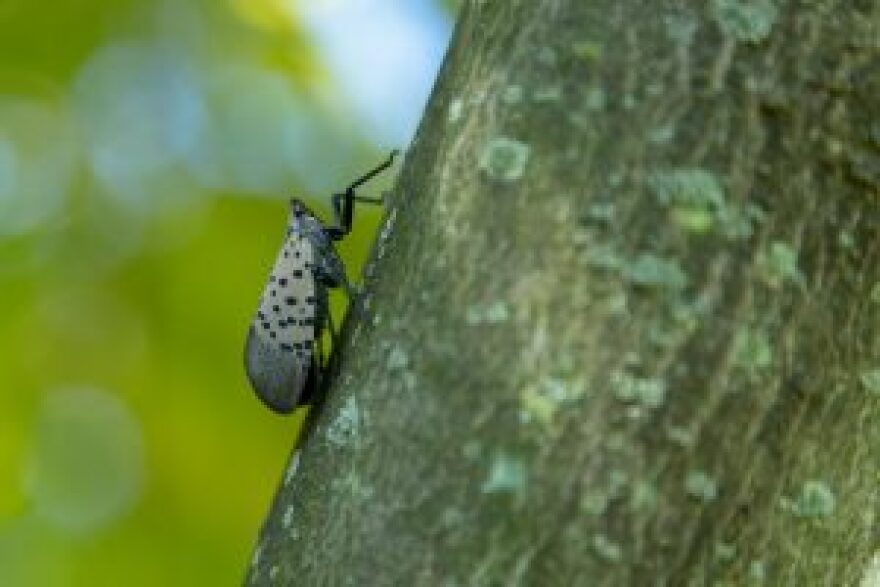The invasive pest that sparked a quarantine in much of New Castle County has hatched— and now may pose an increased threat.
When the quarantine of eleven New Castle County zip codes began in March, spotted lanternflies were overwintering as egg masses, which don’t move unless transported. But officials say rising daily temperatures have lead the invasive insects to hatch into nymphs, which can hop onto moving objects.
Delaware Department of Agriculture’s Stephen Hauss recommends residents in quarantined areas check their cars for small insects— anything “creepy crawly.”
“The nymph right now is very, very small,” he said. “Imagine the smallest tick that you’ve seen. They’ll be … very hard to find right now. It’s still important to look for them.”
By mid-July, the nymphs will have developed red patches, making them easier to identify. Hauss says the spotted lanternfly nymphs could be found on any kind of outdoor object that has not been treated with insecticide or herbicide.
The quarantine requires residents complete an online checklist to transport certain objects. Businesses must complete an online training and inspect vehicles to receive a permit. The quarantined zip codes are 19702, 19703, 19707, 19711, 19801, 19802, 19803, 19805, 19807, 19809 and 19810.
The spotted lanternfly can do costly damage to fruit crops or landscaping plants. Its victims include apples, hops, grapes and peaches, as well as pine, oak, willow, walnut, sycamore and poplar trees, according to the Department of Agriculture.
“We know that they feed on a lot of native hardwood trees that are in the forest in New Castle County, so we don’t like that,” said Hauss. “It is a concern if they would start moving south into some of our orchards. But we’re really concerned that they’re in New Castle County as well.”
Hauss says the state is focusing on education and is not enforcing quarantine rules yet, but expects to later this season.
Delaware became the second state in the country to identify the spotted lanternfly in 2017. Hauss says Delaware is among four states with currently active spotted lanternfly populations. The others are Pennsylvania, where the insect was first identified, New Jersey and Virginia. Pennsylvania and New Jersey also have quarantines.




